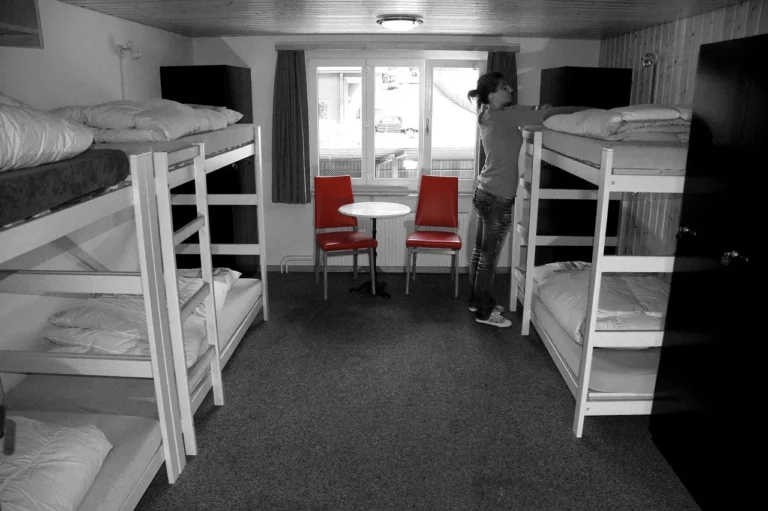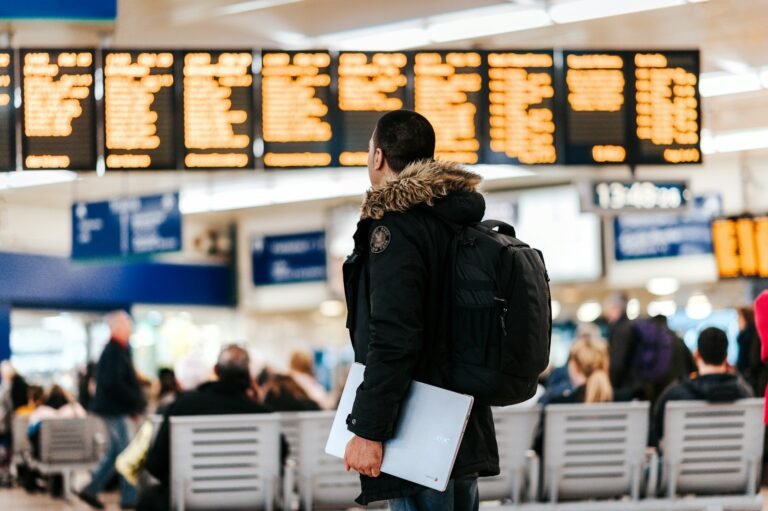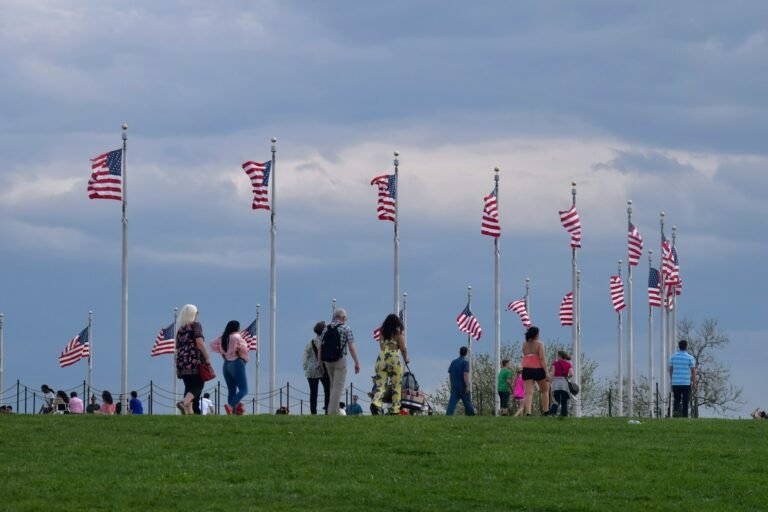Why is it that so many Americans rarely—or reluctantly—venture beyond their own borders? It’s like watching the grandest, most crowded theme park on Earth but insisting you never leave your backyard. Sure, the U.S. is vast, spicy with diverse cities, landscapes, and cultures, but when it comes to traveling abroad, a curious hesitation takes hold, almost as if the idea of international travel is this distant, luxury concept rather than an accessible adventure. There’s no shortage of reasons tossed around—cost, time, fear of the unknown—but the truth feels a bit messier, layered with convenience, comfort, and maybe a dash of national self-centeredness.
It’s not just about money, though that’s often the first stab at explaining it. It’s also about mindset. Many Americans see travel as this epic, once-in-a-lifetime event rather than a casual, recurring chapter in their lives. There’s an unspoken comfort in sticking to what you know, even if the known feels a bit… limited. And yeah, passports are still a thing people procrastinate on, alongside their taxes and that gym membership. Meanwhile, the world waits—with all its chaos, marvels, and imperfections—for the curious American traveler to decide to take the leap. Or maybe not. It’s this tangled dance of desires and excuses that makes the reluctance so interesting. Or frustrating. Maybe both.
The Passport Problem Is Real (But Improving)
Here’s a stat that always gets people: only about 42% of Americans hold valid passports. Compare that to Canadians (60%), Brits (76%), or Swedes (where it’s basically assumed you’ll have one by puberty), and the gap is staggering.
But here’s the thing—that number’s actually climbed quite a bit. Back in 2007, it was only 27%. So we’re moving in the right direction, just… slowly. Like, continental drift slowly.
The reason? For most of American history, you didn’t need a passport to visit Mexico or Canada. That changed in 2007 with the Western Hemisphere Travel Initiative, and suddenly millions of Americans realized international travel required actual documentation. Revolutionary concept, I know.

Geography Isn’t Destiny, But It Sure Helps
Let me paint you a picture. If you’re in Berlin and you’re bored on a Saturday, you can hop on a train and be in Prague for dinner. Total cost? Maybe €50 if you’re not trying. Total exotic-foreign-country points earned? Infinite.
Now, if you’re in Des Moines and you want that same experience? You’re looking at a minimum $600 flight, probably a day of travel each way, and that’s assuming you can even get the time off work. To visit a place that, let’s face it, probably speaks English anyway.
The United States is roughly the size of Europe. But Europe has 44 countries. We have… 50 states that are all still America. Don’t get me wrong—there’s incredible diversity within the US. Louisiana doesn’t feel like Oregon. But it’s not the same as crossing an actual border where the language, currency, and cultural assumptions all shift.
Americans can travel thousands of miles without needing a passport. A family road trip from New York to California covers more distance than London to Istanbul. That’s not an excuse—it’s just context.

The Vacation Time Crisis Nobody Wants to Talk About

Here’s where things get uncomfortable. The average American gets about 10 days of paid vacation per year. And that’s only after they’ve been at a job for a year. Some people get less. Some people get none.
Compare that to:
- UK: 28 days minimum
- France: 30 days minimum
- Germany: 24 days minimum
- Australia: 20 days minimum
Even our neighbors in Canada get more time off than we do.
Now, imagine you’ve got 10 precious days. Maybe 12 if you’re lucky. Are you really going to spend two of them in airports and another recovering from jet lag? Or are you going to drive to the beach, see your family, or finally tackle that home renovation project?
I’m not saying it’s impossible to travel internationally with limited vacation days—I’ve done weekend trips to Mexico that were absolutely worth it. But the math just works differently when you’re not constantly calculating whether you’ll still have enough PTO left for Christmas.
The Cost Factor (Yes, It’s Expensive)
Let’s talk money. Not in a defensive way, but realistically.
A family of four wanting to visit Europe for a week is looking at:
- Flights: $3,000–$5,000
- Accommodation: $1,500–$3,000
- Food and activities: $2,000–$3,000
- Total: $6,500–$11,000
That same family could drive to a national park, stay in a nice Airbnb, and have an amazing week for maybe $2,000. Or hit up Disney World for roughly the same cost as Europe but with less language barrier stress.
I know what you’re thinking—”But Europeans travel too, and they’re not all rich!” True. But European flights are often cheaper due to competition (hello, Ryanair and EasyJet), distances are shorter, and perhap most importantly, they have more time to spread costs out or choose slower, cheaper travel methods.
Americans also face higher healthcare costs, student loan debt, and generally less robust social safety nets, which makes dropping five figures on a vacation feel more financially risky.
The Psychological Distance Factor
There’s something else going on here, something harder to quantify. I think many Americans view international travel as a bigger deal than it needs to be. It’s not just a trip—it’s an EVENT. Capital letters, months of planning, something you do for a milestone anniversary or after you retire.
Meanwhile, my European friends treat a long weekend in Lisbon like I treat driving to the next state over. It’s just… something you do. Not a massive logistical undertaking.
Part of this is cultural. Americans are often raised with a certain anxiety about the rest of the world. The news doesn’t help—international coverage tends to focus on conflicts, disasters, and political chaos. You don’t see a lot of headlines about “Nothing Bad Happened in Spain Today, Tapas Still Delicious.”
There’s also a weird American exceptionalism thing happening, where some people genuinely believe everything you could want is already here. Why learn another language or adapt to another culture when you’ve got the “best country in the world”? (Spoiler: every country thinks they’re the best. It’s adorable.)
Work Culture and the Fear of Being Unreachable
American work culture has a particular flavor of toxicity that makes international travel psychologically harder. There’s this underlying expectation that you’re always available, always “on.” Taking a week off feels like career self-sabotage.
And when you’re in a different time zone—especially one that’s 6+ hours ahead—you’re suddenly unreachable during your boss’s business hours. That makes a lot of Americans nervous in a way that a domestic trip doesn’t.
I’ve seen colleagues check work email from the Louvre. I’ve watched people decline amazing opportunities because “it’s not a good time at work” (spoiler: it’s never a good time). This isn’t about lack of wanderlust—it’s about a system that makes it genuinely risky to fully disconnect.

Language Anxiety Is More Real Than We Admit
Not everyone’s comfortable navigating a place where they don’t speak the language. And before you say “everyone speaks English”—that’s partly true in tourist areas, but it’s also kind of a privileged assumption.
Americans generally aren’t raised bilingual (unlike much of Europe), and our education system’s approach to foreign languages is, let’s say, not optimal. Most Americans take a couple years of Spanish or French in high school, learn to conjugate exactly three verbs, and promptly forget everything.
This creates a psychological barrier. If you’ve never navigated a train system in another language or ordered food without pointing at pictures, it can feel intimidating. Whereas domestic travel? You already know the language, the tipping culture, and how to read the signs.
The Terrorism Elephant in the Room
Post-9/11 America developed a particular kind of anxiety about international travel. The TSA theater doesn’t help—after being trained that flying is inherently dangerous and requires extensive security measures, some people just… stopped wanting to fly.
There’s also been decades of news coverage emphasizing dangers abroad while downplaying domestic risks. Americans worry about terrorism in Paris but not mass shootings in schools. It’s a weird cognitive dissonance, but it affects travel decisions.
So… Are Americans Just Lazy?
Here’s where I push back. I don’t think Americans are inherently less curious or adventurous than anyone else. I think we’re operating within a system that makes international travel genuinely harder.
Shorter vacation time + higher costs + greater distances + work culture anxiety + geographic isolation = fewer international trips.
It’s not that Americans don’t travel. We travel a ton—domestically. The US tourism industry is massive. We’re just doing it within our own borders because that’s what the system incentivizes.
That said—and here’s the uncomfortable part—there is a certain insularity in American culture that makes some people genuinely uninterested in the rest of the world. That’s real, and it’s worth examining. Not everyone who doesn’t travel abroad is a victim of circumstance. Some people just aren’t curious, and that’s a different conversation.
Insert image: Americans at domestic destinations like Grand Canyon
What’s Actually Changing
The good news? Things are shifting, slowly.
Younger Americans are more interested in international travel than previous generations. Remote work has made longer trips more feasible for some people. And there’s a growing recognition that experiencing other cultures isn’t just fun—it’s genuinely valuable for understanding the world.
Budget airlines are slowly starting to offer more transatlantic routes. Travel hacking and points systems have made flights more accessible to middle-class travelers who know how to work the system.
And perhap most importantly, social media has made the world feel smaller and less scary. When you can follow someone’s Instagram story through the streets of Bangkok in real-time, those destinations feel less like the moon and more like places you could actually visit.
Breaking the Cycle: What Actually Works
If you’re an American who wants to travel more internationally, here’s what I’ve learned actually works:
Start small. You don’t need to do three weeks in Southeast Asia right out of the gate. A long weekend in Canada or Mexico counts. Build confidence gradually.
Use credit card points strategically. I’m not going to pretend to be a travel hacking guru, but one good rewards card used smartly can cover flights. The Points Guy is genuinely helpful for this stuff.
Travel during shoulder season. May, September, and October offer better prices and fewer crowds in most European destinations.
Question your assumptions. That voice saying “it’s too expensive” or “it’s too complicated”? Sometimes it’s right. But sometimes it’s just fear dressed up as practicality.
Prioritize it. If you’re waiting for the “perfect time” when you have enough money and vacation days and no responsibilities, you’ll never go. You have to decide it’s important enough to happen now-ish, even if imperfectly.
The Bottom Line
So why don’t Americans travel abroad more? It’s complicated. It’s partly structural—vacation policies, geography, costs. It’s partly cultural—our relationship with work, our assumptions about the world, our education system. And it’s partly individual—some people prioritize it, and some people don’t.
But here’s what I know: every American I’ve seen take that leap and actually go somewhere new comes back different. Not always in huge ways. Sometimes it’s just a slightly expanded sense of what’s normal, or a new favorite food, or a realization that maybe we don’t have everything figured out.
And maybe that’s the real reason international travel matters—not as a status symbol or bragging right, but as a reminder that our way isn’t the only way. That there are millions of people living completely different lives that work just fine, thank you very much.
You don’t need to become a digital nomad or visit 100 countries before you die. But maybe—just maybe—it’s worth questioning why that trip abroad feels so impossible. Because sometimes it’s genuinely hard. And sometimes it’s just what we’ve been told.
Frequently Asked Questions About Americans and International Travel
What percentage of Americans have passports?
Answer: Approximately 42% of Americans hold valid passports as of recent data, which is significantly lower than most other developed nations. This number has been increasing steadily since 2007 when passport requirements changed for land and sea travel to Canada and Mexico.
Why is international travel more expensive for Americans?
Answer: Several factors contribute to higher costs: longer flight distances to most international destinations, limited budget airline competition on transatlantic routes, fewer vacation days making extended trips less cost-effective, and the generally higher cost of living in the US that makes saving for travel harder.
Do Americans get less vacation time than Europeans?
Answer: Yes, significantly less. The average American receives about 10 days of paid vacation annually, while most European countries mandate 20-30 days minimum. The US is the only developed nation with no federally mandated paid vacation time.
Is it true Americans don’t travel because they’re not interested in other cultures?
Answer: That’s an oversimplification. While some Americans may lack curiosity about other cultures, structural barriers like limited vacation time, high costs, and geographic distance play a much larger role. Americans travel extensively within their own country, which suggests the issue isn’t lack of wanderlust.
How does American geography affect international travel rates?
Answer: The US is geographically isolated with vast distances to cover before leaving the country. Americans can drive thousands of miles through dramatically different landscapes without crossing an international border, unlike Europeans who can visit multiple countries in a day.
Are younger Americans more likely to travel internationally?
Answer: Yes, millennials and Gen Z Americans show significantly more interest in international travel than previous generations. They prioritize experiences over material goods and are more comfortable using technology to navigate foreign destinations.
What’s the cheapest way for Americans to start traveling internationally?
Answer: Start with nearby destinations like Mexico, Canada, or Caribbean islands to minimize flight costs and jet lag. Travel during off-peak seasons, use credit card rewards strategically, and consider shorter trips initially to build confidence without breaking the bank.
How does American work culture discourage international travel?
Answer: American work culture emphasizes constant availability and views extended time off as potentially career-limiting. Many workers fear being unreachable across time zones or worry that taking vacation makes them appear less committed to their jobs.
Do language barriers prevent Americans from traveling abroad?
Answer: Language anxiety is a real factor for many Americans, who are generally raised monolingual and receive limited foreign language education. While English is widely spoken in tourist areas, the psychological barrier of potentially not being understood can deter some travelers.
Is international travel becoming more accessible to Americans?
Answer: Yes, gradually. More budget airlines are offering transatlantic routes, remote work has made longer trips feasible, travel hacking strategies have become mainstream, and social media has demystified international destinations, making them feel more accessible.
Top Travel Resources and Recommendations for Americans Going Abroad
Here are essential tools, platforms, and destinations to help American travelers plan their first (or next) international adventure:
Booking Platforms:
- Skyscanner – Comprehensive flight comparison tool that searches across multiple airlines and booking sites, perfect for finding the cheapest routes to international destinations.
- Google Flights – Excellent for flexible date searching and price tracking, with user-friendly interface that shows price trends over time.
- Booking.com – Massive inventory of international accommodations with flexible cancellation policies and loyalty rewards that actually add value.
- Airbnb – Great for longer stays or when you want a kitchen to save on food costs, especially valuable for families traveling abroad.
- Hostelworld – Not just for backpackers anymore; many hostels offer private rooms at a fraction of hotel costs, perfect for budget-conscious travelers.
Travel Credit Cards:
- Chase Sapphire Preferred – Solid entry-level travel card with valuable points transfer partners and travel protections without overwhelming annual fees.
- Capital One Venture X – No foreign transaction fees and excellent rewards rate, making it ideal for international spending.
Travel Planning Resources:
- The Points Guy – Comprehensive resource for maximizing credit card rewards and travel hacking strategies specifically useful for Americans.
- Rome2rio – Shows all possible transportation options between destinations, invaluable for navigating European and Asian transit systems.
- TripAdvisor – Despite mixed reviews about review authenticity, it remains useful for comparing multiple attractions and restaurants in unfamiliar destinations.
Starter Destinations for American Travelers:
- Mexico City, Mexico – Short flight from most US cities, incredible food scene, rich cultural heritage, and affordable—perfect first international destination.
- Montreal, Canada – European feel without the transatlantic flight, French language practice opportunity, and stunning architecture.
- Dublin, Ireland – English-speaking, friendly locals, direct flights from many US cities, and easy jumping-off point for exploring Europe.
- Iceland (Reykjavik) – Increasingly popular stopover destination with convenient positioning between North America and Europe, otherworldly landscapes.
- Lisbon, Portugal – Affordable Western European capital with great weather, delicious food, and growing English proficiency among locals.
Insurance and Safety:
- World Nomads Travel Insurance – Flexible coverage for various trip lengths and activities, particularly good for adventure travel.
- Smart Traveler Enrollment Program (STEP) – Free US State Department service that registers your trip and provides safety updates for your destination.
Language and Communication:
- Google Translate App – Offline translation capability and camera feature for translating signs and menus in real-time.
- Duolingo – Free language learning app to pick up basic phrases before your trip, making navigation less stressful.
Transportation:
- Rail Europe – Simplified booking for European train travel, though sometimes individual country rail sites offer better prices.






